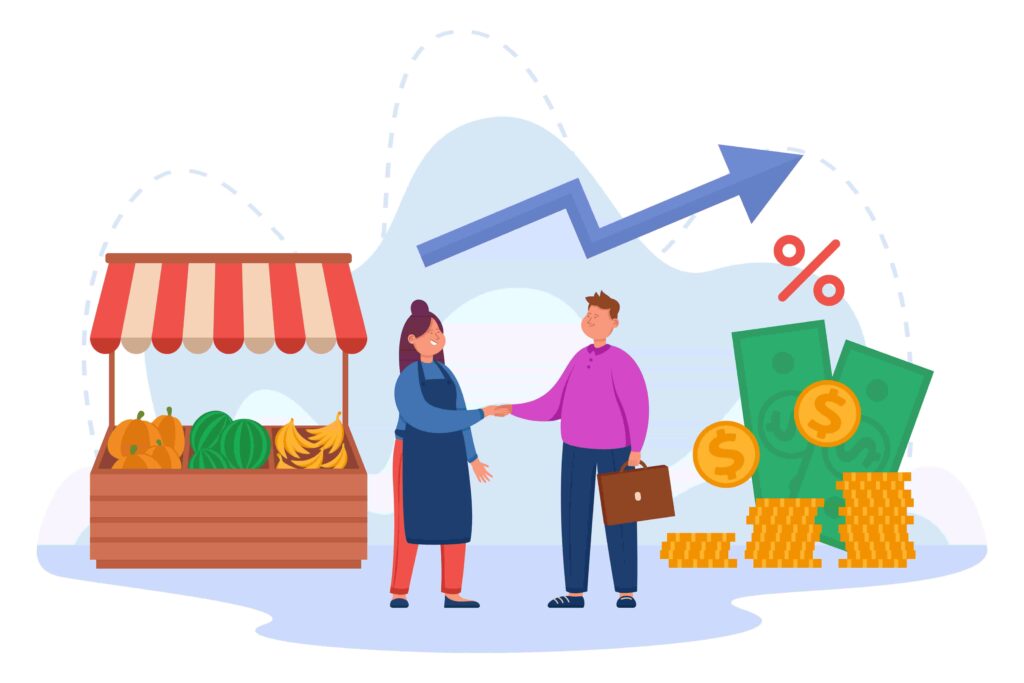How Do Market Operating Price (MOP) And Suggested Retail Price (SRP) Work In Businesses?

Optimizing pricing strategies requires a thorough understanding of the market operating price (MOP) and suggested retail price (SRP). Without reliable market data and customer feedback, it can be difficult to determine these factors precisely.
HS Brands’ Mystery Shopping service has emerged as a valuable resource for businesses seeking to optimize their pricing strategy.
Experienced mystery shoppers can help businesses learn more about:
1. Customer habits
2. Market tendencies
3. The competitive landscape
For businesses to make more informed decisions regarding MOP and SRP, HS Brands’ Mystery Shopping service provides invaluable insight into:
1. Customer behavior
2. Competitive pricing strategies
3. Product positioning
MOP Full Form & Meaning
Market Operating Price (MOP) is a key retail industry term used to determine the price at which a product should be sold to wholesalers and retailers for both parties to make a profit.
The price takes into account the costs of:
1. manufacturing
2. transportation
3. marketing
4. distribution
on the part of the manufacturer.
It has a substantial impact on the profit margins of retailers and manufacturers alike. Manufacturers are required to set the MOP at a level that generates sufficient revenue to cover expenses and generate a profit.
However, retailers must set the MOP at a price that is competitive and enticing. A high MOP could reduce sales, whereas a low MOP could reduce profit margins. Thus, the MOP must be carefully selected to guarantee mutual gain.
SRP Full Form & Meaning
Suggested Retail Price (SRP) is a term commonly used in the retail industry to refer to the price at which a product is suggested to be sold to the end customer. Retailers use the manufacturer’s SRP to set the product’s price.
Several factors determine a product’s suggested retail price (SRP), including:
1. Manufacturing and production costs: Materials, labor, and other costs of making the product.
2. Marketing and advertising expenses: The cost of promoting and advertising the product to potential customers.
3. Distribution and logistics costs: the price of transporting, storing, and delivering the product to retailers.
4. Competitor pricing: the prices of similar products offered by market competitors.
5. Target market and demographics: Appropriate prices for the product’s demographic and target market.
To provide transparency to customers and ensure consistency across retailers, the SRP is often displayed on the product or packaging. A company’s pricing strategy depends on the SRP, which affects product value.
Setting the SRP too high may deter buyers, while setting it too low may make the product seem low-quality. Thus, manufacturers must carefully consider their pricing strategy and set the SRP to reflect their product’s value.
Why Are MOP And SRP Required For Large Enterprise Businesses?
Minimum Operating Price and Standard Retail Price, abbreviated as MOP and SRP, are essential for large enterprise businesses for several reasons.
1. First, they help maintain pricing consistency across channels and locations, which is crucial for brand image.
2. Second, they prevent competitors from engaging in price wars and undercutting, which can harm profitability.
3. Thirdly, they level the playing field for all retailers and franchisees, ensuring a level playing field and fair competition.
HS Brands is a market-leading provider of Mystery Shopping services that assist businesses with MOP and SRP compliance. Mystery shoppers evaluate the customer experience and ensure consistency in pricing and policies.
In A Business Setting, How Do MOP And SRP Function?
Market Operating Price (MOP) and Suggested Retail Price (SRP) are two key pricing strategies used by businesses. MOP is a product’s price to retailers or distributors, while SRP is its price to consumers.
Consequently, how do MOP and SRP operate in businesses?
There are several factors to consider, such as production costs, competitor prices, product demand, and profit margins. Additionally, businesses may use market research and consumer insights to determine which price points will be most appealing to their target market.
MOP and SRP must be balanced to maximize profits and maintain market competitiveness. A low MOP can aid in attracting retailers and wholesalers, but setting the SRP too low can hurt profit margins.
In contrast, retailers and wholesalers may be less likely to stock the product if the SRP is set too high without consideration for the MOP.
Here is where mystery shopping comes into play. Mystery shopping is used by companies to evaluate their customer service and pricing strategies. Businesses hire mystery shoppers to evaluate pricing and product availability as if they were regular customers.
Mystery shopping can assess a company’s MOP and SRP implementation. For instance, if a Mystery Shopper finds a product priced significantly higher than its SRP, the retailer may be overcharging. If a product is always out of stock, the company may need to rethink its MOP strategy.
A further illustration: if a producer fixes the MOP at $50 and the suggested retail price is $70, the producer will earn a $20 profit. A retailer makes $10 by selling the product for $60. But if the store sells the item for $80, they will make a $30 profit, even though the customer may think the item is only worth $50.
HS Brands Mystery Shopping can assist businesses in evaluating the implementation of their strategies and identifying areas for improvement. By refining their pricing strategies with HS Brands’ Mystery Shopping services, companies can increase their profitability and customer value.
What Is The Difference Between MRP And SRP?
Maximum Retail Price, or MRP, is a crucial concept in the Indian retail sector. It is the highest tax-inclusive price a product can be sold at. In India, the MRP is required to be displayed on the product or its packaging. It prevents overcharging by capping product prices. The MRP is a crucial consumer protection regulation.
SRP, or Suggested Retail Price, is set by the manufacturer and is only a suggestion for retailers. SRP, unlike MRP, is not mandatory for retailers. The manufacturer determines the SRP after considering production cost, competition, and market demand. It’s often used as a marketing tool to attract customers with low prices.
HS Brands Mystery Shopping Service helps businesses comply with MRP regulations. HS Brands’ Mystery Shopping Service can accurately and impartially assess whether products are sold at the correct MRP. This service can also identify pricing issues like retailers charging more than the MRP, which can cause customer dissatisfaction and loss of trust.
With HS Brands’ Mystery Shopping Service, businesses can gain valuable insights into their products and customer interactions, leading to informed decisions and improved business performance.
HS Brands: Your Partner In Optimizing Pricing Strategies
To operate a successful business, it is crucial to optimize pricing strategies.
HS Brands’ Mystery Shopping service provides valuable insights into:
1. customer behavior
2. market trends
3. competitive pricing strategies
Businesses can optimize their pricing strategies by using HS Brands’ mystery shopping service to ascertain MOP and SRP. By providing insights into market dynamics and customer behavior, HS Brands’ mystery shopping services can help businesses grow and profit.
Large retailers must follow strict MOP and SRP guidelines to ensure pricing consistency and fair competition. HS Brands Mystery Shopping evaluates MOP, SRP, customer service, store cleanliness, and product placement. This service is a crucial resource for businesses looking to improve metrics like profits, client satisfaction, and brand perception.







